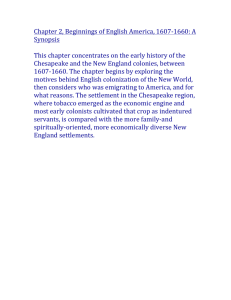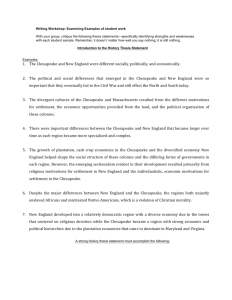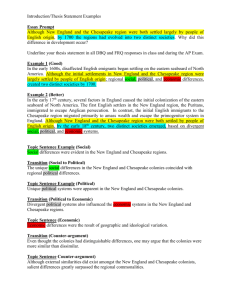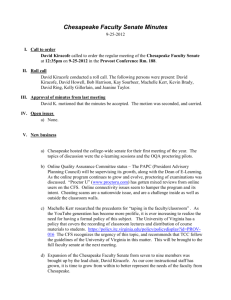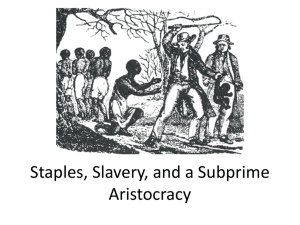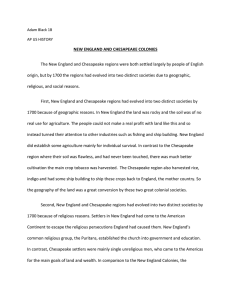Mayra Castro Period 3 09/22/12 APUSH Mr. Holst The Chesapeake
advertisement
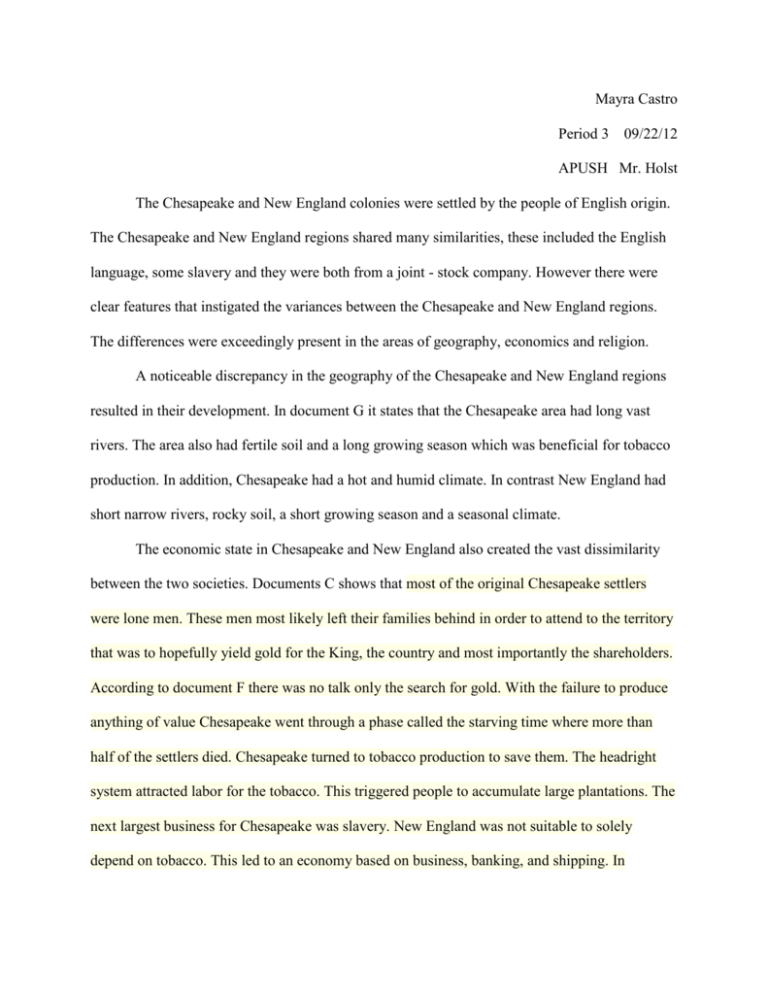
Mayra Castro Period 3 09/22/12 APUSH Mr. Holst The Chesapeake and New England colonies were settled by the people of English origin. The Chesapeake and New England regions shared many similarities, these included the English language, some slavery and they were both from a joint - stock company. However there were clear features that instigated the variances between the Chesapeake and New England regions. The differences were exceedingly present in the areas of geography, economics and religion. A noticeable discrepancy in the geography of the Chesapeake and New England regions resulted in their development. In document G it states that the Chesapeake area had long vast rivers. The area also had fertile soil and a long growing season which was beneficial for tobacco production. In addition, Chesapeake had a hot and humid climate. In contrast New England had short narrow rivers, rocky soil, a short growing season and a seasonal climate. The economic state in Chesapeake and New England also created the vast dissimilarity between the two societies. Documents C shows that most of the original Chesapeake settlers were lone men. These men most likely left their families behind in order to attend to the territory that was to hopefully yield gold for the King, the country and most importantly the shareholders. According to document F there was no talk only the search for gold. With the failure to produce anything of value Chesapeake went through a phase called the starving time where more than half of the settlers died. Chesapeake turned to tobacco production to save them. The headright system attracted labor for the tobacco. This triggered people to accumulate large plantations. The next largest business for Chesapeake was slavery. New England was not suitable to solely depend on tobacco. This led to an economy based on business, banking, and shipping. In document D it states that families were to consist of the rich and the poor, but that everyone who lived there would get a piece of land and a common ground where inhabitants could plant or graze animals. For income, New England depended on fishing, whaling and ship building, but in document E it states that the General Court was responsible for setting prices and wages, not the people. Religion was another contribution to the large difference between the Chesapeake and New England regions. The Chesapeake colony never made any pretense of being a religious settlement. Aside from a vague support for the Church of England, there was little spiritual enthusiasm among the early Virginians. Chesapeake was loyal to the Anglican Church. Maryland was to be a haven for Catholics, yet they had no right to worship in public and they were banned from holding public office. In 1649 the religious toleration act was passed in Maryland which finally allowed Catholics the freedom to worship. Protestants formed majority of the population and ruled until 1658. In contrast the New England colony was founded as an example of pure religion. In document A John Winthrop, the leader of the Massachusetts Bay Company, wrote about a tight knit community who worked, suffered, mourned and celebrated together. It also states that they were to be a city upon a hill or a model for the Christian community and world. New England did not separate the church and state. In document E it says that they were allowed to make a moderate profit to support themselves, but not enough to become rich. In conclusion the differences in geography, economics and religion within the Chesapeake and New England regions affected the large contrasts between the two societies. Being colonies of English origin was the closest similarity Chesapeake and New England shared. The motives for building a community, the economic drawbacks and remarkably different religious views set these two colonies worlds apart.
